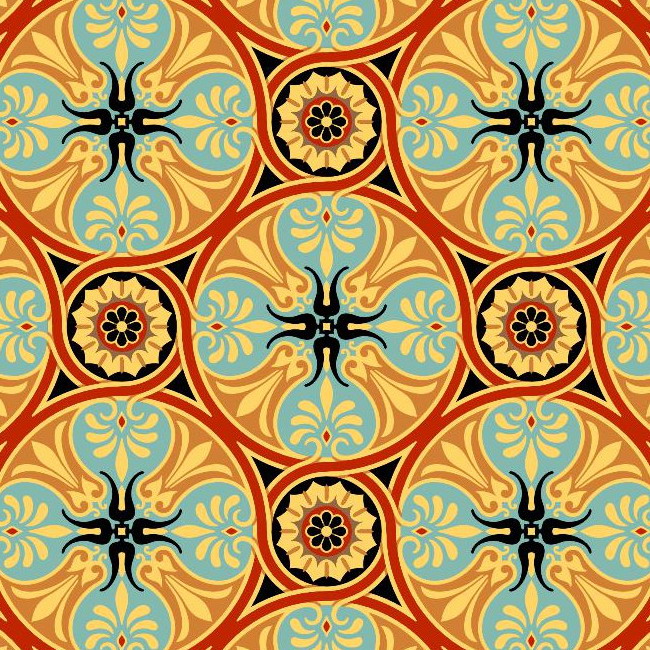
Sample from the Systematic Atlas of Cement Tiles, D.W. '22
Systematic Atlas of Cement Tiles
A Morphology of Repeating Designs
I like to collect ornamental patterns1. Looking at public domain sourcebooks of tile factories in Belgium and France, I am pondering the geometric kinship of all ornaments. A simple idea like repeated circles is executed in endless permutations, from being crossed by bars to being filled with garlands2.
With the Systematic Atlas of Cement Tiles, I am working on a modern, fully vectorized monograph of cement tiles and related designs from the turn of the century3. But beware: Collecting ornaments is collecting cultures.
To give a bit of context, I am treating the great expositions of the 19th century as projects to bring the cultural output of all nations under their sway4. Ornament is one of the dominant proxies for exotic locales all over the planet.
This makes the formula of the historical pattern sourcebooks still in circulation controversial. The approach of pure geometry is of course problematic in its own way, as it presupposes the blending of cultures under geometric principles. And so there is room for a new debate.

Monograph | D.W. '23
Sample spread from the Systematic Atlas of Cement Tiles
≈ 42 × 28 cm (≈ 8,3 × 11 in)
Zoom In

Monograph | D.W. '23
Sample spread from the Systematic Atlas of Cement Tiles
≈ 42 × 28 cm (≈ 8,3 × 11 in)
Zoom In
Footnotes
- 1↑ I have heard it stated that complex patterns can lead the gaze round and round, resulting in a meditative mood. Also compare my Instant Patterns for a fully automated pattern machine.
- 2↑ This thought is not new. At the very least, Lewis Day in his Anatomy of Pattern, B.T. Batsford, London 1887, elaborated on common "skeletons" of all ornaments. Persian draftspeople before probably knew of these too. But for me it was still fascinating.
- 3↑ On one hand, I am unduly irritated how the historical books keep including decorative objects and architectural details out of the blue. For quite some time I kept stumbling over them conceptually because I tried to classify them as well. Now I simply skip them over, but it takes willpower sometimes. On the other hand I must add that it is hard to compete with the original chromolithographs, they were the high technology of their times and it shows.
- 4↑ I recommend Donald Preziosi's The Art of Art History, 2e, Oxford University Press, New York 2009.
